Kia Sportage: General Information, Troubleshooting, Special Service Tools
Kia Sportage Third generation (SL) - (2011-2016) - Service and Repair Manual / Heating, Ventilation, Air Conditioning / General Information, Troubleshooting, Special Service Tools
General Information
Specification
Air Conditioner
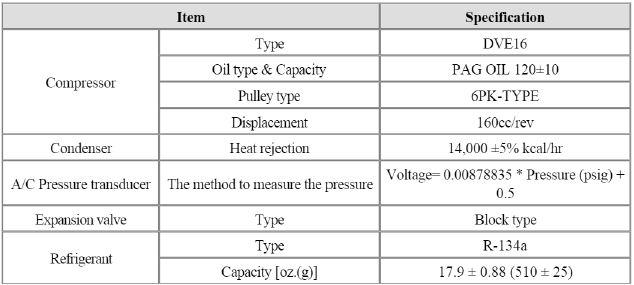
Blower Unit
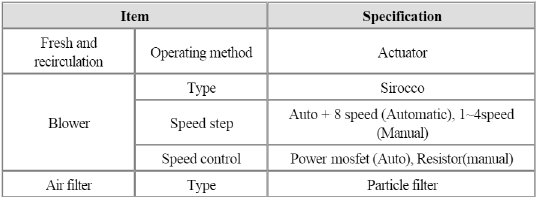
Heater And Evaporator Unit
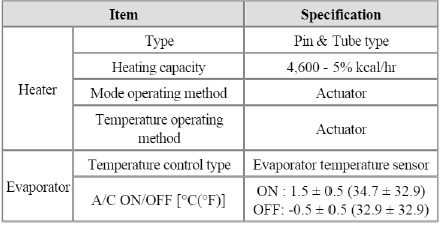
Troubleshooting
Troubleshooting
Problem Symptoms Table
Before replacing or repairing air conditioning components, first determine if the malfunction is due to the refrigerant charge, air flow or compressor.
Use the table below to help you find the cause of the problem. The numbers indicate the priority of the likely cause of the problem. Check each part in order. If necessary, replace these parts.
After collecting the malfunction, check the complete system to ensure that performance is satisfactory.
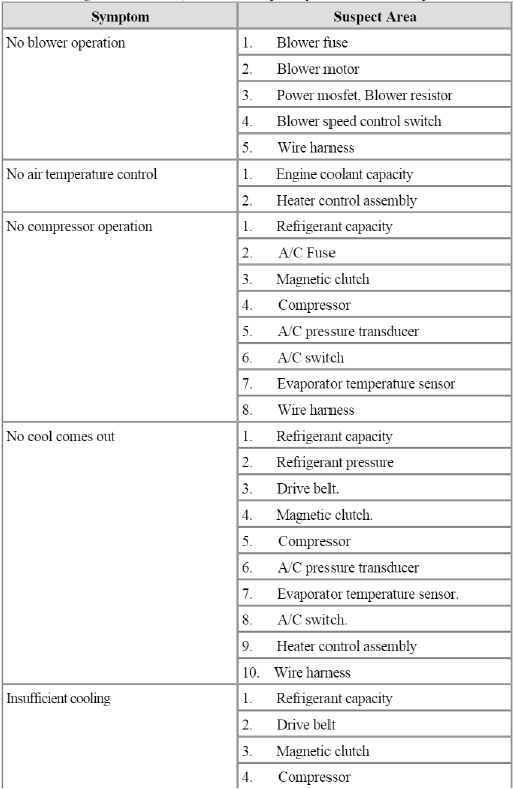
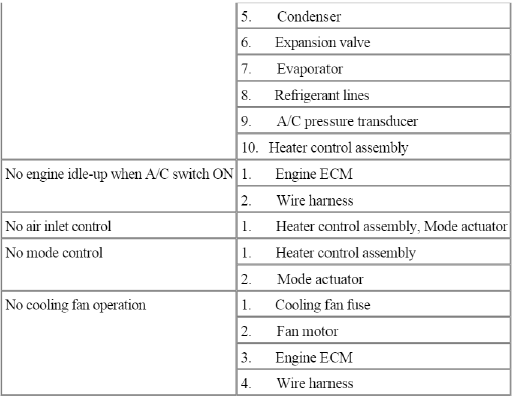
Special Service Tools
Special Service Tools

READ NEXT:
 General Safety Information and
Caution
General Safety Information and
Caution
Instructions
When Handling Refrigerant
1. R-134a liquid refrigerant is highly volatile. A drop on the skin of your
hand could result in localized frostbite.
When handling the refrigerant,
 Repair procedures
Repair procedures
Refrigerant System Service Basics
Refrigerant Recovery
Use only service equipment that is U.L-listed and is certified to meet the
requirements of SAE J2210 to remove
4FC-134a(R-134a) from t
SEE MORE:
 Identification Number Locations/Description
Identification Number Locations/Description
Identification Number Locations
Identification Number Description
Vehicle Identification Number
World Manufacturer Identifier (WMI)
KNA: Passenger vehicle, MPV (Multipurpose Passenger Vehicle)/SUV
(Sports Utility
Vehicle) ZRV (Recreational Vehicle)
KNC: Commercial
 Battery saver function
Battery saver function
This vehicle is equipped with a variety of
lights to illuminate the interior and exterior
of the vehicle.
CAUTION
To prevent the battery from being discharged,
do not leave the headlamp and
interior light on for a prolonged time
while the engine is not running.
Battery saver function
The pu
Content
- Home
- Kia Sportage - Fifth generation (NQ5) - (2022-2025) - Owner's Manual
- Kia Sportage - Second generation (JEKM) (2005-2015) - Body Workshop Manual
- Kia Sportage Third generation (SL) - (2011-2016) - Service and Repair Manual
- Sitemap
- Top articles